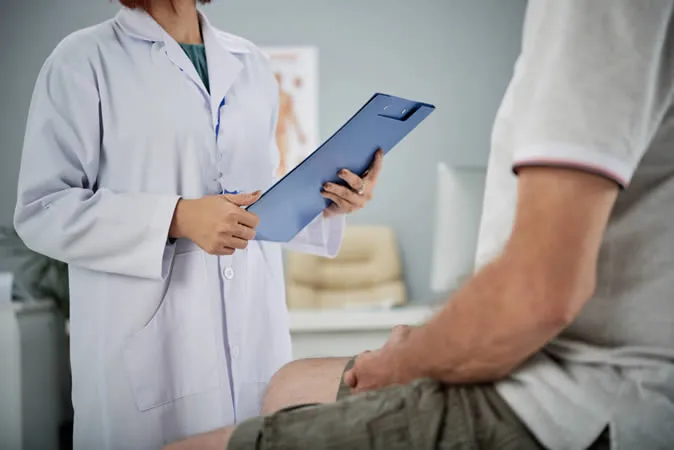Mohs Micrographic Surgery

What is Mohs Micrographic Surgery?
Mohs Micrographic Surgery is a specialized surgical technique employed in the treatment of skin cancer. The procedure involves sequentially removing and examining thin layers of skin until no cancerous cells are detected. The primary objective of Mohs surgery is to completely eradicate skin cancer while minimizing damage to the surrounding healthy skin. This approach ensures that the dermatologist can confirm the total removal of cancer, thereby increasing the likelihood of complete recovery and minimizing the need for additional treatments or surgeries.

What are the benefits of Mohs Micrographic Surgery?
The benefits of Mohs Micrographic surgery are numerous and contribute to its reputation as a highly effective treatment for skin cancer. The primary advantage of Mohs surgery is the thorough microscopic examination of the tissue, which enables the complete removal of cancer cells and results in high cure rates. This meticulous approach ensures that all cancerous cells are eradicated while preserving as much of the surrounding healthy skin as possible.
Other significant benefits of Mohs surgery include:
- Single Outpatient Visit: The procedure is typically completed in a single outpatient visit, making it a convenient option for patients.
- Local Anesthesia: Local anesthesia is used to numb the treated area, resulting in a quicker recovery than procedures requiring general anesthesia or sedation.
What is the Process of Mohs Micrographic Surgery?
Mohs Micrographic Surgery is a meticulous and highly effective process performed in stages, all during one visit.
Here are the steps involved during the surgery:
- Examination and Preparation: The dermatologist examines the patient, marks the biopsy spot, and positions the patient for optimal access. Local anesthesia is administered to numb the area.
- Top Layer Removal: A thin layer of visible cancerous tissue is removed with a scalpel, and the wound is temporarily bandaged.
- Lab Analysis: The removed tissue is divided, color-coded, and mapped by the dermatologist, then frozen, sliced, stained, and placed on microscope slides.
- Microscopic Examination: The dermatologist examines the slides for cancer cells. If found, their location is marked on the map.
- Second Layer Removal: If cancer cells are detected, another layer of skin is removed precisely where the cancer cells remain, based on the map.
- Wound Repair: Once no cancer cells are detected, the wound is either left to heal naturally or closed with stitches, depending on its size and location. In some cases, a skin flap or graft may be required, and another specialist may be involved in the wound repair.
- Finishing Up: The entire process can take several hours, especially if multiple rounds are needed. Following the dermatologist’s instructions for wound care, scar care, and follow-up is crucial for the best outcome.
What types of skin cancers are treatable with Mohs Surgery?
Mohs surgery is commonly used to treat the most frequent types of skin cancer, basal cell carcinoma (BCC) and squamous cell carcinoma (SCC). However, it is not limited to these forms. Mohs surgery is also utilized in the treatment of other skin cancers, including certain types of melanomas, dermatofibrosarcoma protuberans, microcystic adnexal carcinoma, sebaceous carcinoma, and extramammary Paget disease, among others. This versatile surgical technique is chosen for its ability to precisely remove cancerous tissues while sparing as much healthy tissue as possible, making it suitable for various types of skin cancers.
What are the self-care tips for Mohs Surgery recovery?
Post-surgery care is crucial for optimal healing after Mohs surgery. Your surgeon will provide specific aftercare instructions, which may include the following tips:
Dressing and Wound Care:
Keep the initial dressing on your wound undisturbed for the first 24 to 48 hours, or as directed by your surgeon.
After the initial healing period, clean the wound with 3% hydrogen peroxide or mild soap, apply petroleum jelly (Vaseline®), and cover with a non-stick dressing twice a day or as directed.
Once the dressing is no longer needed, protect your scar with sunscreen (SPF 30 or higher) and protective hats during sun exposure.
Activity Restrictions:
Avoid strenuous exercise and heavy lifting for at least a week.
Swelling and Bruising:
Apply ice or cold packs regularly in the days following surgery to reduce swelling and bruising. Do not put the ice directly on your skin.
Petroleum Jelly Application:
Cover your wound with petroleum jelly (Vaseline®) until your sutures are removed (one to two weeks). Your surgeon may advise you to continue using petroleum jelly for another couple of weeks after the sutures are removed.
Bleeding: A little bleeding or oozing from the wound is normal in the first few hours after surgery. Applying pressure should stop the bleeding. Call your surgeon if the bleeding doesn’t stop.
Signs of Infection: An infected wound can prolong your recovery time and affect scar healing. You may need topical or oral antibiotics. Contact your surgeon if:
-
-
- You develop a fever.
- You notice a thick, yellowish discharge or foul smell.
- The area around your wound is bright red.
- The skin around your wound is swollen and hot to the touch.
-
Remember, post-operative care is key to a successful recovery after Mohs surgery. Be sure to follow your dermatologists instructions carefully and don’t hesitate to reach out with any questions or concerns.

FAQ About Mohs Micrographic Surgery
Is Mohs Surgery painful?
The surgery itself is not painful because local anesthesia is used. However, there may be some discomfort or pain after the anesthesia wears off.
How long does it take to recover from Mohs Surgery?
Recovery time varies from person to person and depends on the location and size of the tumor, and the type of reconstruction performed. Most people can return to normal activities within a week, but it may take longer for the wound to fully heal.
Will there be a scar after Mohs Micrographic Surgery?
All surgeries leave scars, but Mohs surgery tends to leave a smaller scar than other methods because it removes the least amount of normal tissue.
Can I drive myself home after the surgery?
It is generally recommended to have someone drive you home after the surgery, especially if the surgery is performed near the eyes or if you have taken any sedative medications.
Is there a dermatologist near me in St. Louis that offers Mohs Micrographic Surgery?
Yes. At our St. Louis dermatology office we offer Mohs Micrographic Surgery
to patients from St. Louis and the surrounding area. Contact our office today to schedule an appointment.
